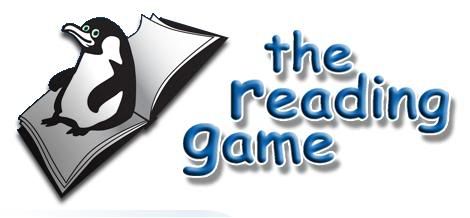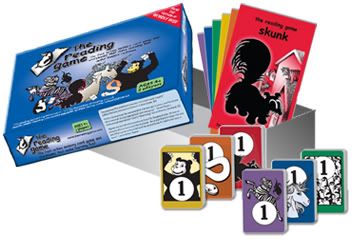
Although I strongly believe in teaching phonics when a child learns to read, I also recognize the need for children to recognize the most common sight words in our language. By learning to read sight words, a child can get a jump start on reading and improve their reading fluency.
The Reading Game uses a series of fun matching games to teach children to quickly recognize or read common words. It teaches 88% of the 25 most commonly used words in our language and 63% of the top 100 words; 54% of the words on the PK, K, and 1st Dolch sight words list are included in these games.
Even if you aren't a homeschool family, this product would definitely make the sight word practice that your child does at home more fun.
The Reading Game consists of six decks of cards used to introduce 30 new words. The cards are dealt out ten at a time to form a small memory game. When two cards are flipped over, the player reads them and determines if they match. At first, the parent (or older student) will help the beginning reader identify the words. Eventually the child will know all ten words and move on to the next set of cards. After every ten new words, there are test sentences so that the parent can tell if the child truly knows the words. After learning all thirty words in a deck, the child is ready to read the corresponding book. The decks and books move in a progressive manner from easiest to harder.
Lauren loved playing the memory games. Even before we started using The Reading Game, she loved playing memory games with her sight word flash cards. We both liked that the games were short; it only takes a few minutes to match up the 10 cards in each mini-deck. A part of me, however, wishes that the games had a even set of matches so that more of our games ended as ties, instead of always having a winner and a loser.
 I was quite impressed with the books. I'm not sure I've ever seen beginning reading books that didn't look babyish and that didn't have overly simplified stories. I would have no problem introducing these books to an older child who is struggling to read. The stories were much more than simple sentences that describe the picture. For instance, in the first book, a skunk without a stripe is sad because the other skunks refuse to play with them. He finds a group of cats to play with and later saves the cats by spraying the dog who tries to chase the cats away.
I was quite impressed with the books. I'm not sure I've ever seen beginning reading books that didn't look babyish and that didn't have overly simplified stories. I would have no problem introducing these books to an older child who is struggling to read. The stories were much more than simple sentences that describe the picture. For instance, in the first book, a skunk without a stripe is sad because the other skunks refuse to play with them. He finds a group of cats to play with and later saves the cats by spraying the dog who tries to chase the cats away.My only objection to the books is that the sentences don't use any punctuation or capitalization. The lack of the punctuation marks Lauren has learned to expect sometimes made it difficult for her to read the stories.
Although the Reading Game is not a complete reading program, it does do a fantastic job of teaching children to identify by sight some of the most common words in the English language. It also gives beginning readers an easily achievable mark of success when they can read whole books by themselves -- books that have interesting story lines and don't look babyish. Later, once a child has experienced reading success, phonics rules can be introduced so that the child is able to decode unfamiliar words.
The Reading Game is available on their website for $24.95. If you do purchase The Reading Game, be sure to visit the educator part of the website to download worksheets with the test sentences for each book and before/after assessment sheets for the individual words.
If you'd like to hear how much the other members of the review crew thought about The Reading Game, please visit The Old Schoolhouse Review Crew blog here.
I received The Reading Game as a member of the 2011 TOS Homeschool Review Crew, and I received no other compensation. In return, I agreed to give an honest review of the materials and how they worked for my homeschool family.



I had to make my son use it enough to even review it. he did not like it. i think he will like it more when he can read a little better.
ReplyDelete